English Heritage.
These are the most interesting of a number of historic buildings and museums to be found in Yarmouth’s Historic South Quay area. There were once many row houses here, but most have been removed by war and slum clearance. Two surviving examples have been restored and one (also known as the Old Merchant’s House) fitted out as it was in the 1870’s, the other (no.111) as it was in 1942.
I found the contents and the explanatory displays most interesting.
Also worth a look is the medieval town wall, much of which still exists to its original height – and it’s free to view.
Category: English Heritage
Marble Hill House, London
English Heritage.
This elegant white Palladian house overlooking the Thames was built for Henrietta Howard, mistress of King George II when he was Prince of Wales. She was also friend of some of the cleverest men in England. It retains its 66 acres of riverside parkland, while the interior has been restored, and some of its dispersed original contents bought back. There are exhibits downstairs, while upstairs the principal saloon has been finely restored and hung with large paintings. Worth a visit.
It appears that the house is now open only on Sat, Sun & bank holiday Mondays, and is by a 1½ hour guided tour once or twice daily.
Fotheringay Castle, Northants.
This castle, with its Mary Queen of Scots asociations, is probably the most romantic castle site in England,and a magnet for visitors. Too bad that it doesn’t exist any more; you can visit the castle mound, but all that visibly remains of the great castle is a tumbled chunk of masonry at the foot of the mound that might have come from its walls.
As a consolation prize, the village has many attractive buildings in honey coloured stone, and the great 15th Century Collegiate Church should be worth a visit. (I didn’t see it when I visited the “castle” as I knew nothing about it.)
Western Heights, Dover, Kent
These Napoleonic fortifications are on the cliff-top a mile from the Castle. Much of the fort is not open, but there is a path along part of the fortifications. There is a short interpretation trail around St Martin¹s Battery, and a longer (1 mile) trail around the former Grand Shaft Barracks. The Grand Shaft is open only on a limited basis.
The area can be awkward to find – look for a car park and stop to examine the signage. It can make an interesting walk.
Dover Castle, Kent
English Heritage.
There are diverse things to see on this site: the great medieval castle built by Henry II, the recent re-creation of a medieval castle interior, the church, the Roman lighthouse tower, the Medieval tunnels under the castle, the Napoleonic tunnels in the cliff, and the associated WWII tunnels housing an underground hospital etc, not to mention the cliff-top Admiralty Look-out.
The castle, for once, is a building rather than a ruin, and the recreation of the medieval interior furnishings is interesting. The bright primary colours somehow remind me of a child’s poster paint box. The audio-visual projections using actors are also great fun. The Roman lighthouse tower beside the church looks weather-worn, but it’s amazing that it’s still standing. There is plenty of interest in the cliff-side tunnels which are full of WWII exhibits. There are also great views of the Channel and Dover Harbour.
The Castle could be an all-day visit, but there are some other military relics in the area, such as the Western Heights.
De Grey Mausoleum, Beds.
English Heritage.
Attached to a small church in a not very interesting village is a remarkable mausoleum, housing a sequence of 17 sculpted and effigies monuments, spanning nearly three centuries (1615-1899), to the De Grey family of Wrest Park.
These are well worth seeing, but your visit requires a bit of preparation. The mausoleum is kept locked, with a keyholder in the village. You might imagine that the keyholder’s house would be next to the church, but it wasn’t – it was a car drive away at the other end of the village. You are advised to phone the keyholder in advance (when I went to the house I’m almost sure the keyholder was expecting someone else 🙂 ) There is an audio tour (not available on site) which you can download. The lock on the mausoleum gate was awkward, but will open if you twist and pull in the right order.
Apethorpe Hall, Northants.
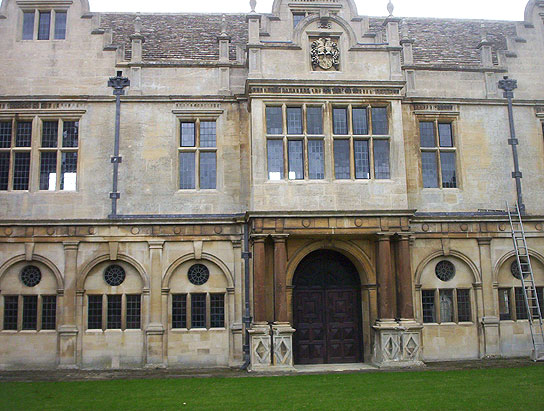
Apethorpe Hall is a huge Jacobean mansion, built around three courtyards. Viewed from the village side, the house is a great length of pale stone, straggling across one’s line of view like some beached stone ship. Close to, and inside the first courtyard, the quality of the architecture is evident. Inside, there are some interiors considered of national importance, and some interesting plasterwork and woodwork, including a rare Jacobean staircase.
English Heritage bought this place several years ago, after it had been neglected by an absentee owner, and spent several million pounds to make the roofs watertight and stop the building from falling down. The interiors remain in need of total refurbishment.
It was hoped that Apethorpe could be sold on to a private owner with bottomless pockets, but so far there have been no takers, and there has been whining from the tabloid press about the waste of public money. It is unfortunate that the last long-term owner of the house moved to an adjoining property, left it with no access except for a narrow village road, and planted a line of fast-growing trees to block out the view of the countryside.
On the far side of the house are gardens which have been well kept up, and a view across the gardens towards the house gives the illusion of a fine house still in its prime.
If you want to see Apethorpe for yourself, keep a sharp lookout for notice of the guided tours that take place on limited dates during the summer months. There is a fee for these.
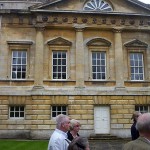
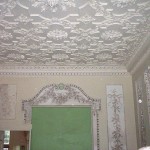
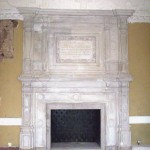
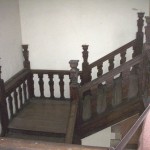
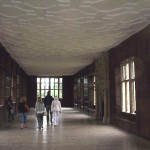
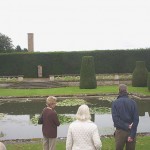
Kirby Hall, Northants.
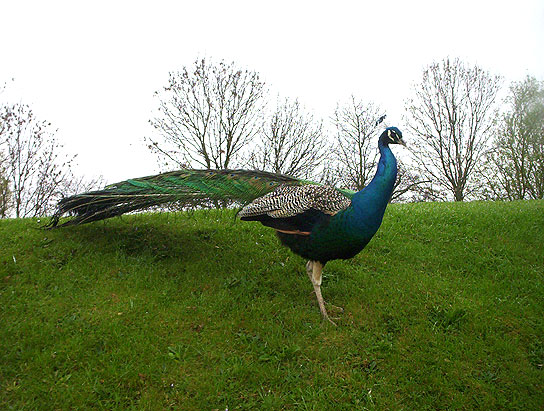
This is a great Elizabethan and 17th-century house, now partly roofless, though the Great Hall and state rooms are still roofed and intact. These rooms are refitted and redecorated to 17th and 18th century specifications. There is an outer walled courtyard, while buildings, some now roofless, surround the inner courtyard. The entry to the inner courtyard has an impressive three-tier porch.
The bulk of the building, with its elaborate stonework, and many tall chimneys, remains impressive. The state rooms have a pair of large and distinctive curving bay windows. Inside, the interiors and exhibitions are of interest. Outside is a great 17th-century garden, recently recreated. Peacocks roam in the grounds. An audio tour is available.
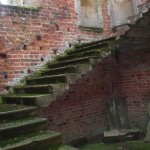
Denny Abbey and Farmland Museum, Cambs.
English Heritage & Farmland Museum Trust.
Denny Abbey was founded in 1159 as a Benedictine monastery, then it became a retirement home for elderly Knights Templars. After the Templars’ suppression for alleged heresy in 1308, it passed to the Countess of Pembroke, who converterd part into a house and the rest into a convent for “Poor Clare” Franciscan nuns. The convent was disolved by Henry VIII in 1539, and the buildings became a farm till the 1960’s.
Today, the additions of later centuries have been stripped back, and the structure displayed as a relic of the pre-dissolution period. The nun’s refectory building, later used as a barn, still stands.
Alongside, the Farmland Museum has Walnut Tree Cottage, furnished as a labourer’s home of the 1940’s, and a fenman’s hut, blacksmith’s and wheelwright’s workshops, a village shop display and many other relics of Cambridgeshire village life.
The Abbey building is quite interesting. Though parts are little more than a shell, it’s possible to look at some rooms upstairs.
Walnut Tree Cottage is worth seeing. An authentic interior has been re-created, and its awfulness, without any modern conveniences, with dimly lit bedrooms and authentic damp, should serve as an antidote to any romanticising of rural cottage life! The other Farmland Museum exhibits are also of interest.
English Heritage members can visit the Abbey free, but still have to pay a modest charge to visit the Farmland Museum.
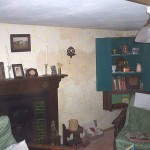
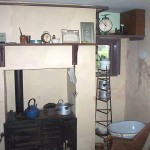
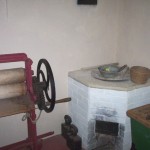
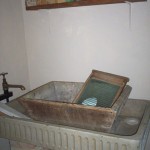



Brough Castle, Cumbria
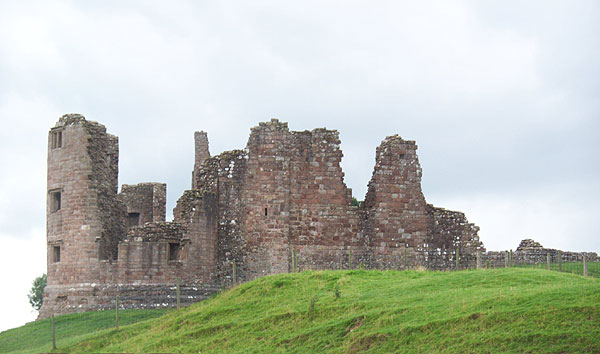 English Heritage.
English Heritage.
Brough Castle stands on a ridge commanding strategic Stainmore Pass, on the site of a Roman fort. Its towering keep, frequently the target of Scots raids, dates from about 1200. More comfortable living quarters were later added by the Clifford family, only to be accidentally burnt following a ‘great Christmas party’ in 1521. Like so many other castles hereabouts, Brough was restored in the 17th century by the Lady Anne Clifford, traces of whose additions can still be seen.
St Michael’s Parish Church, in pretty Church Brough near the castle, displays an exhibition about the region.
The castle is much ruined, though the keep stands to some height. Inside the curtain walls there are various structures to look at.
Opened daily, no admission charge. The castle shares a guidebook with Broughton Castle, a few miles away.
